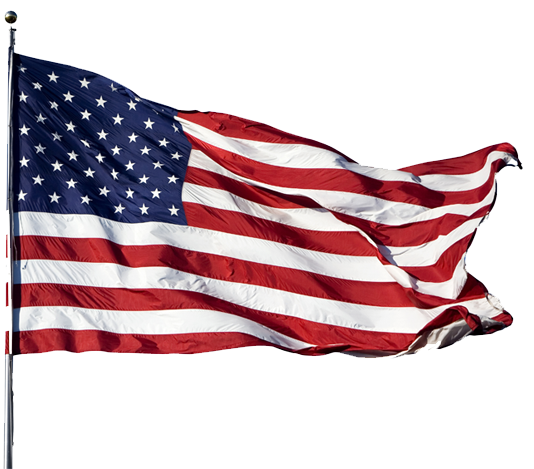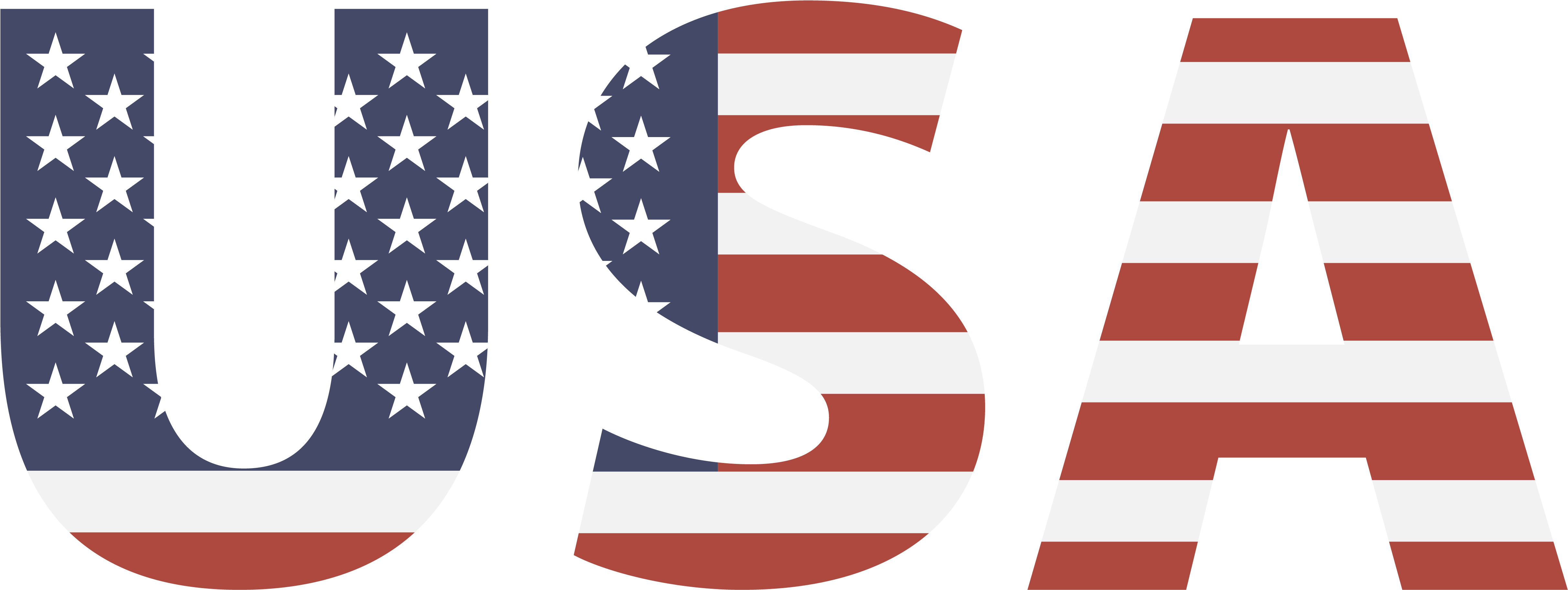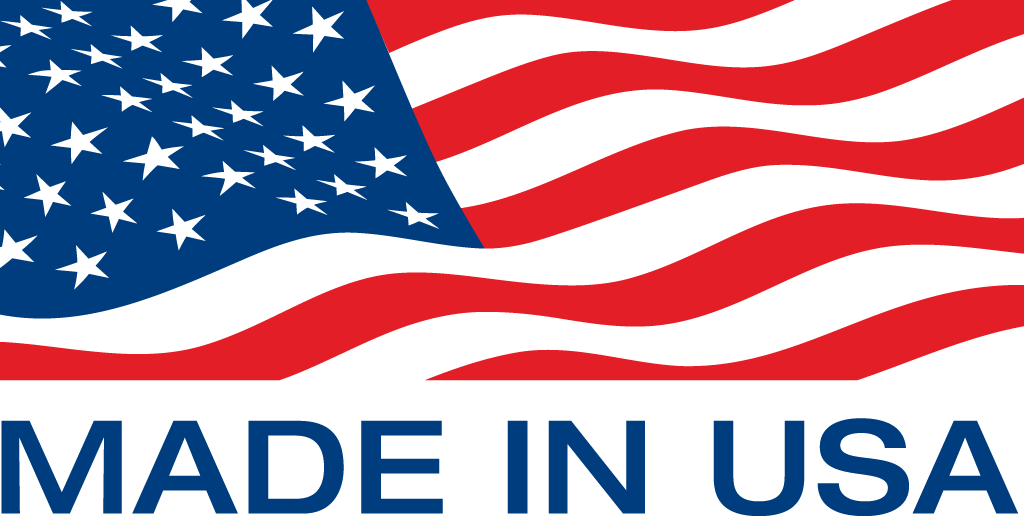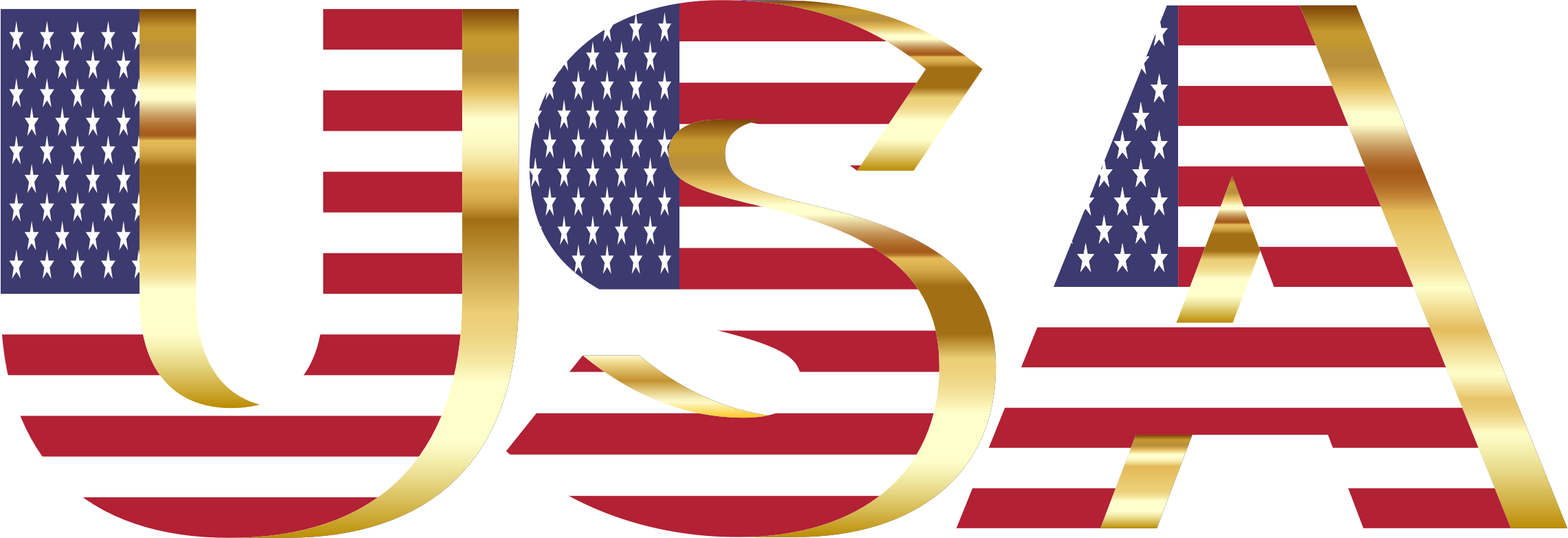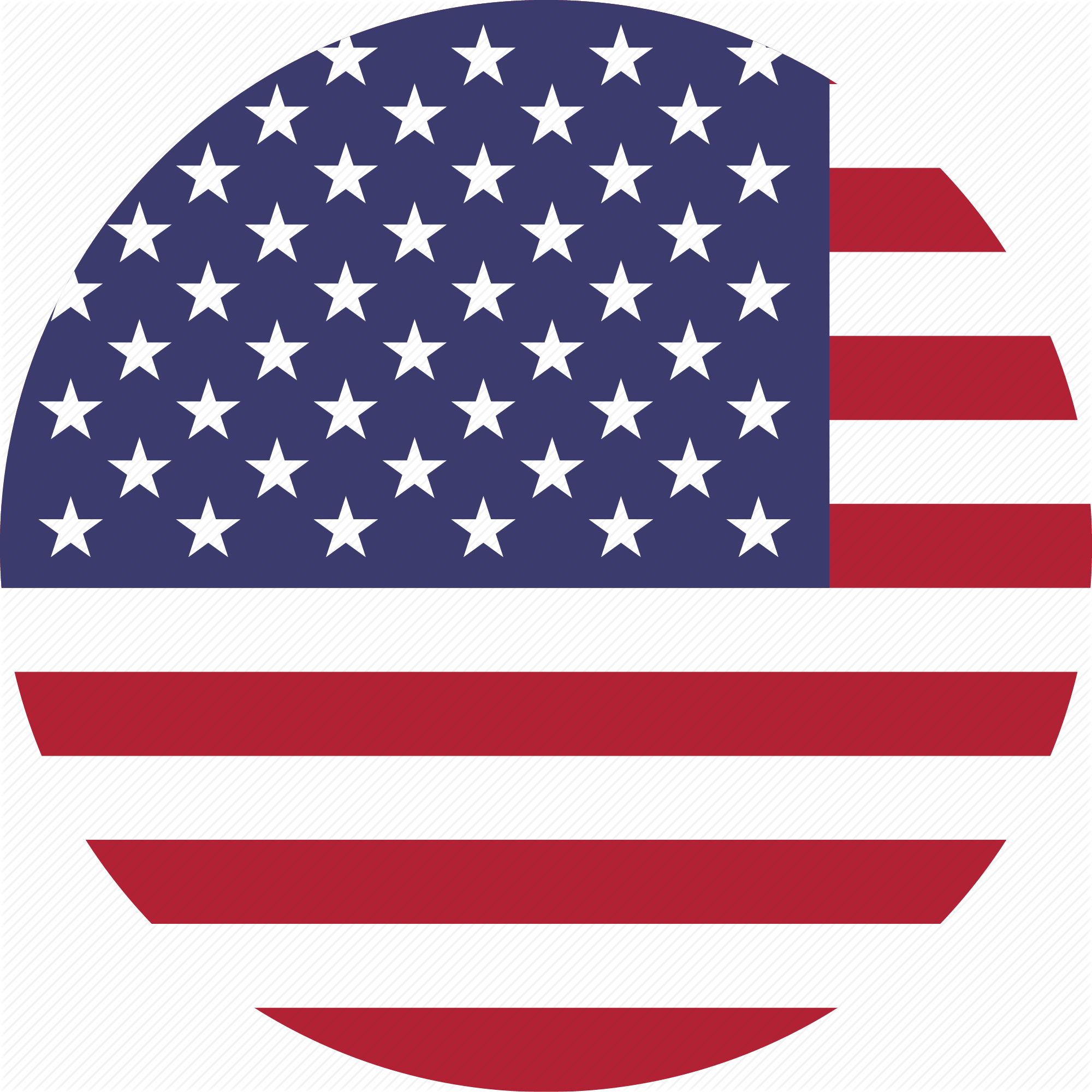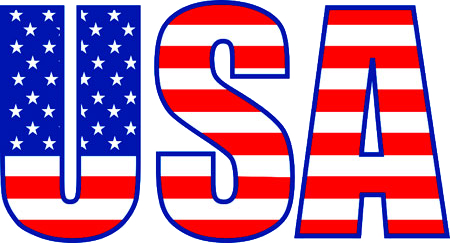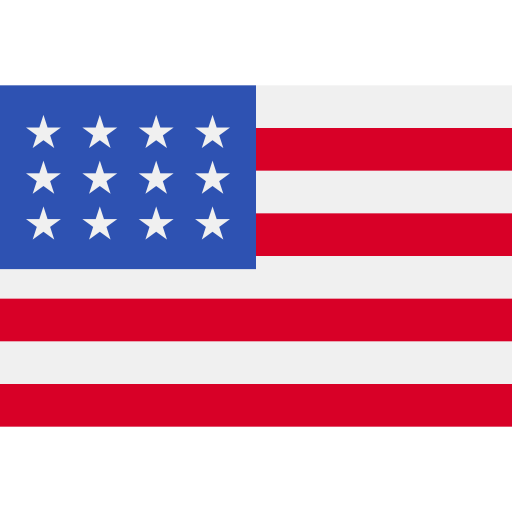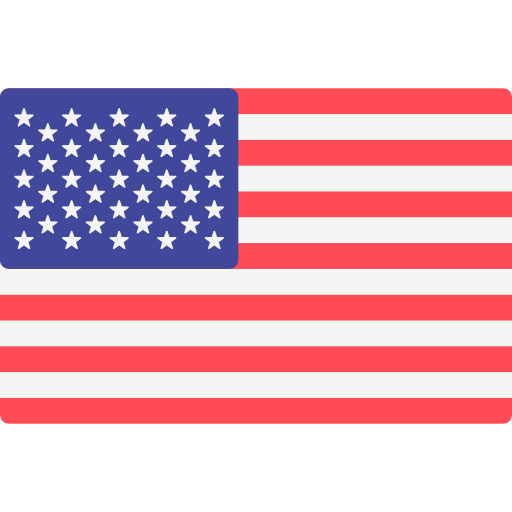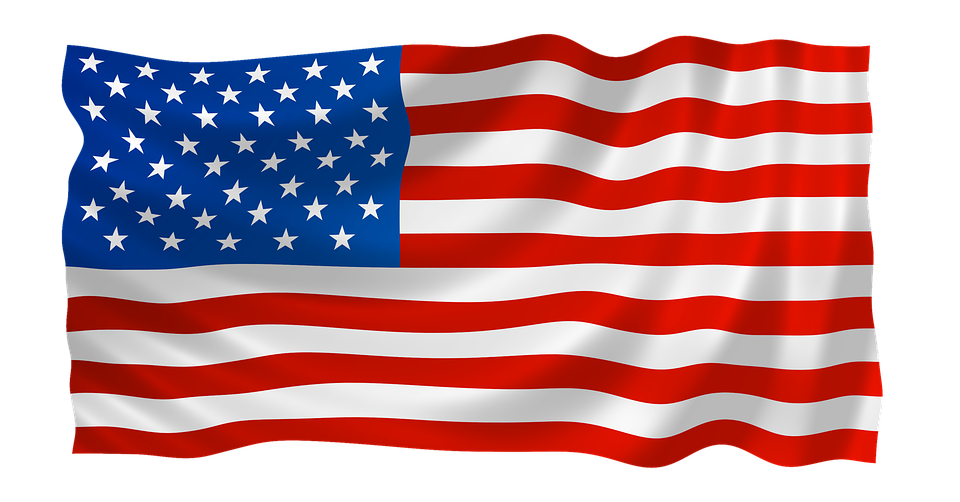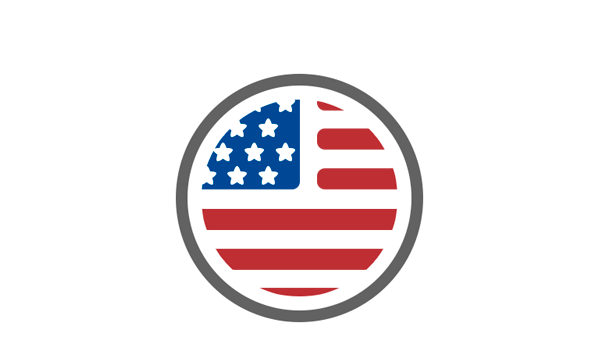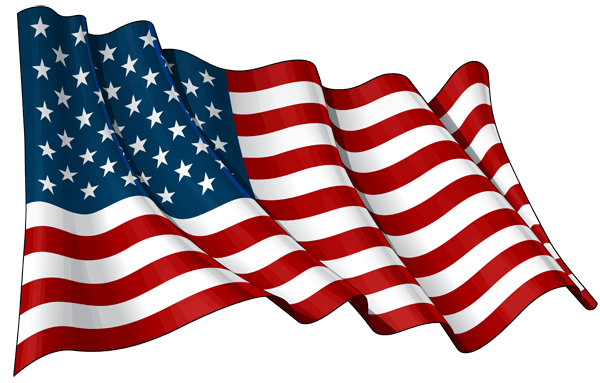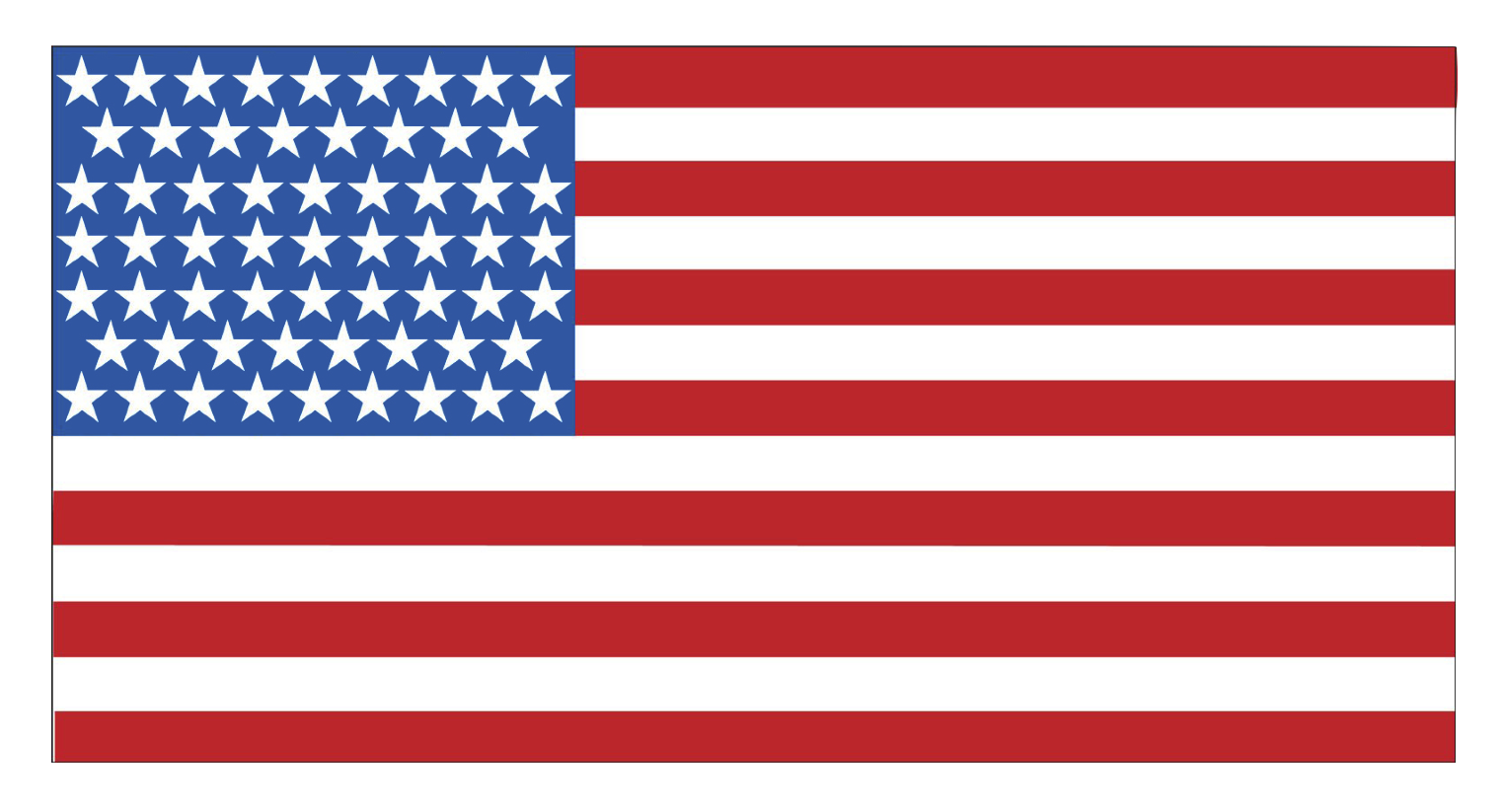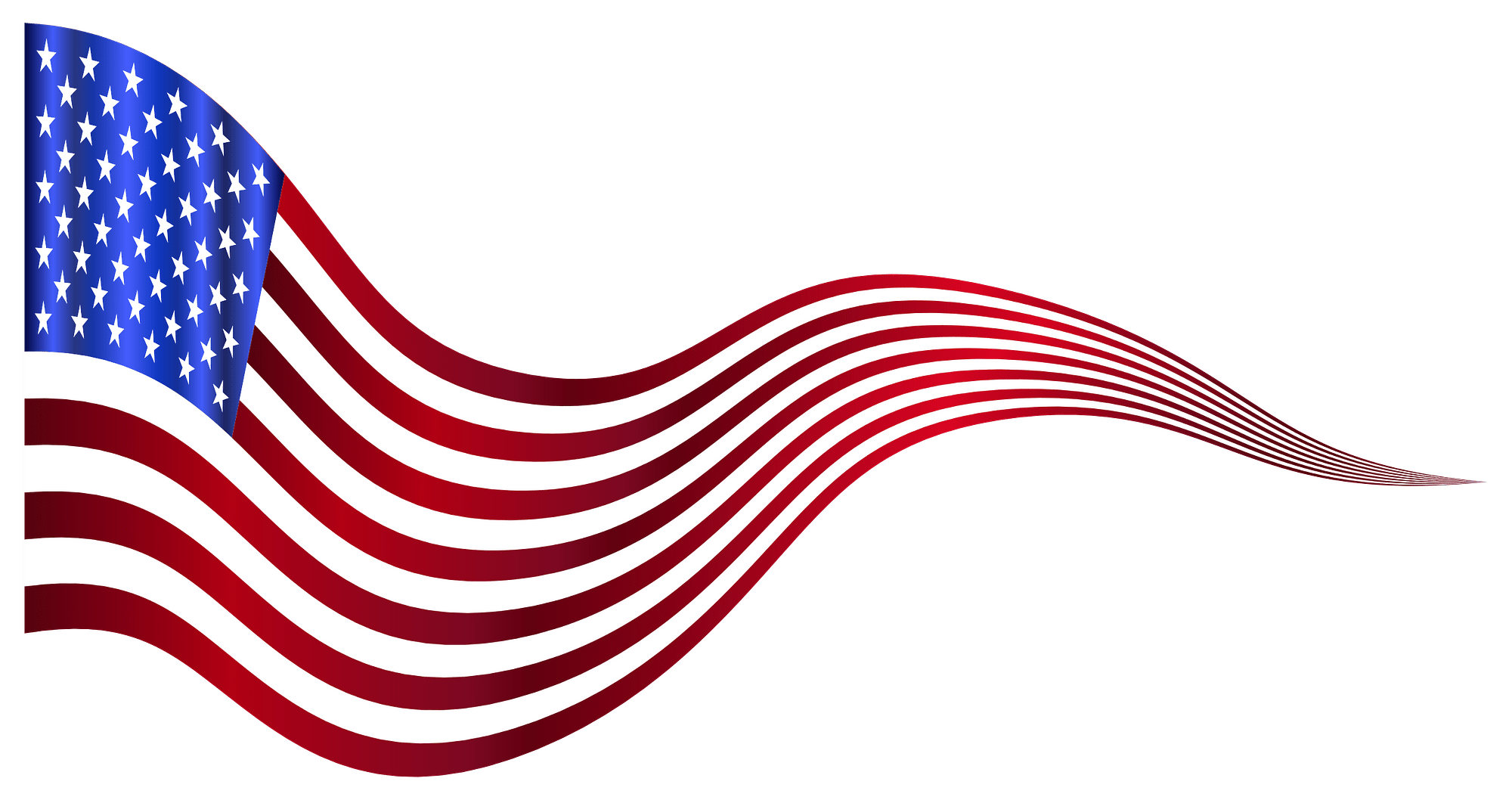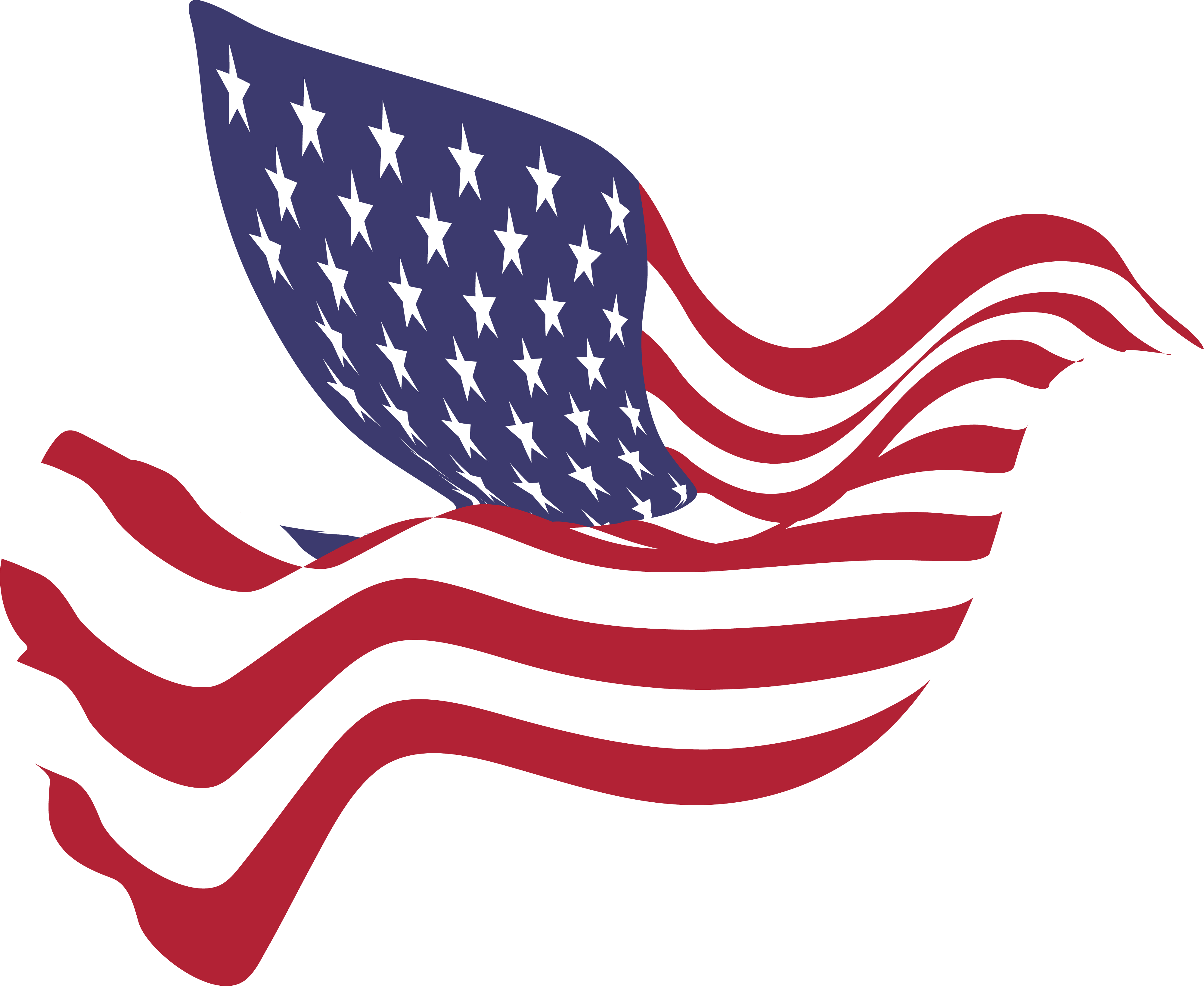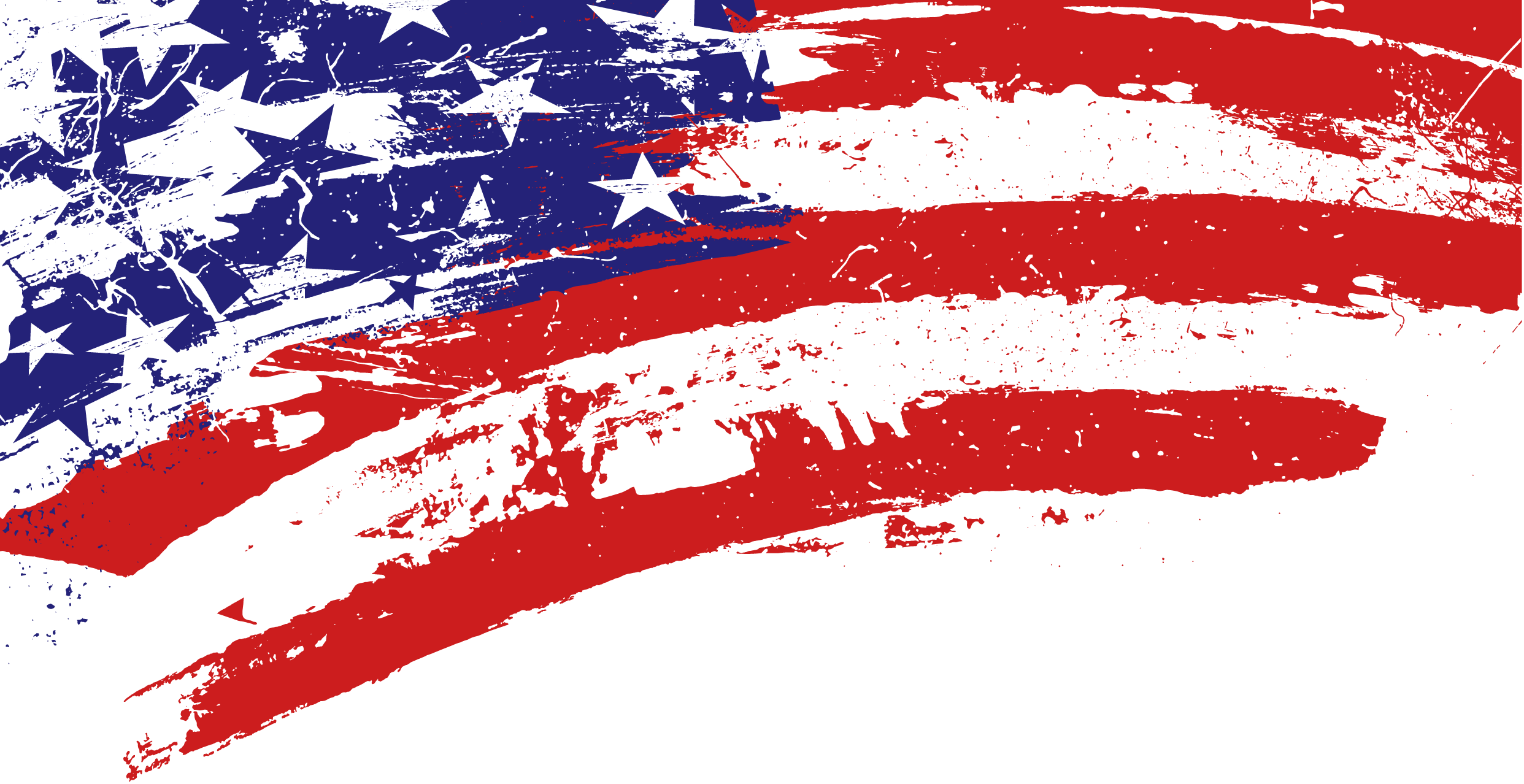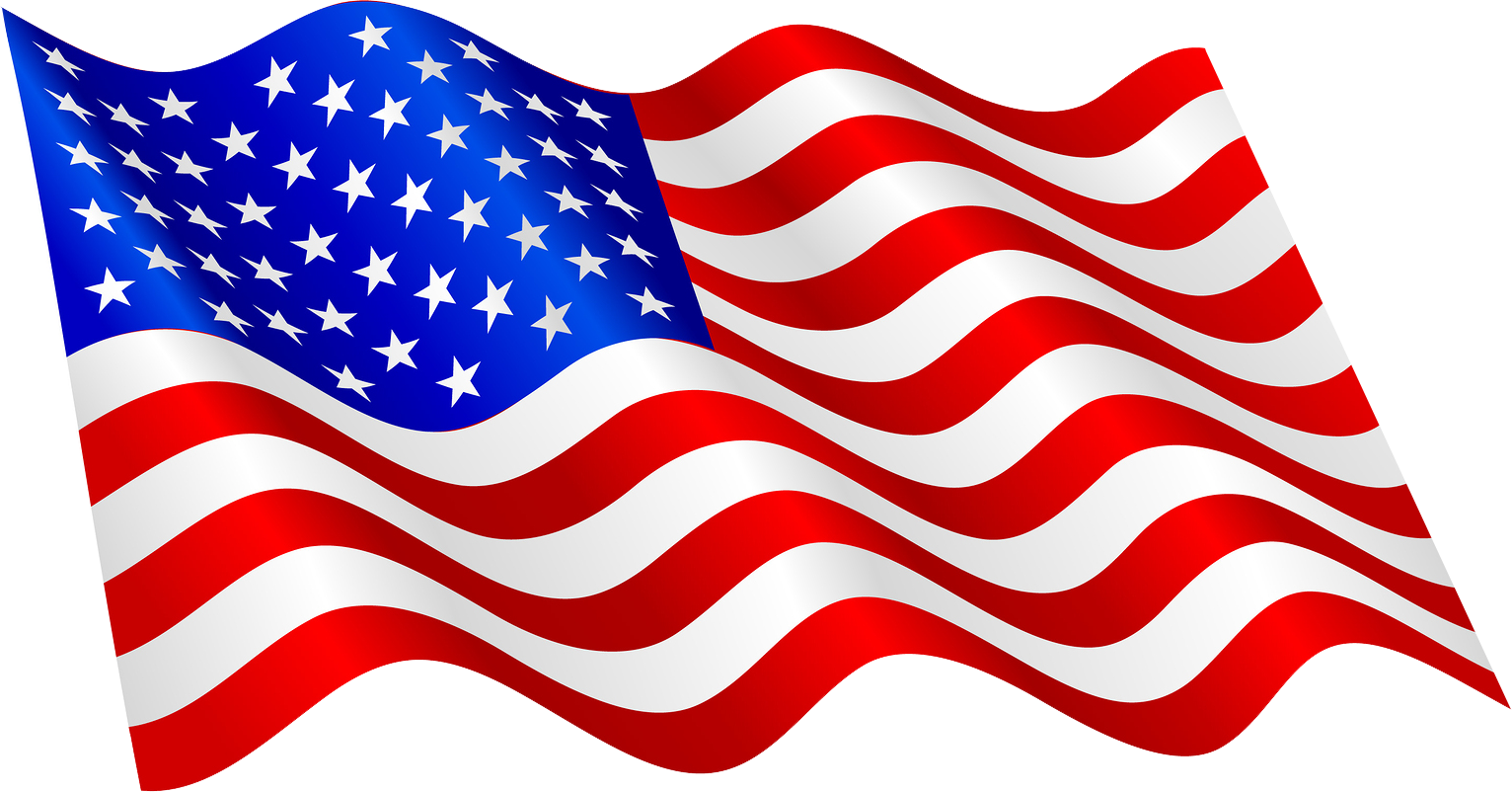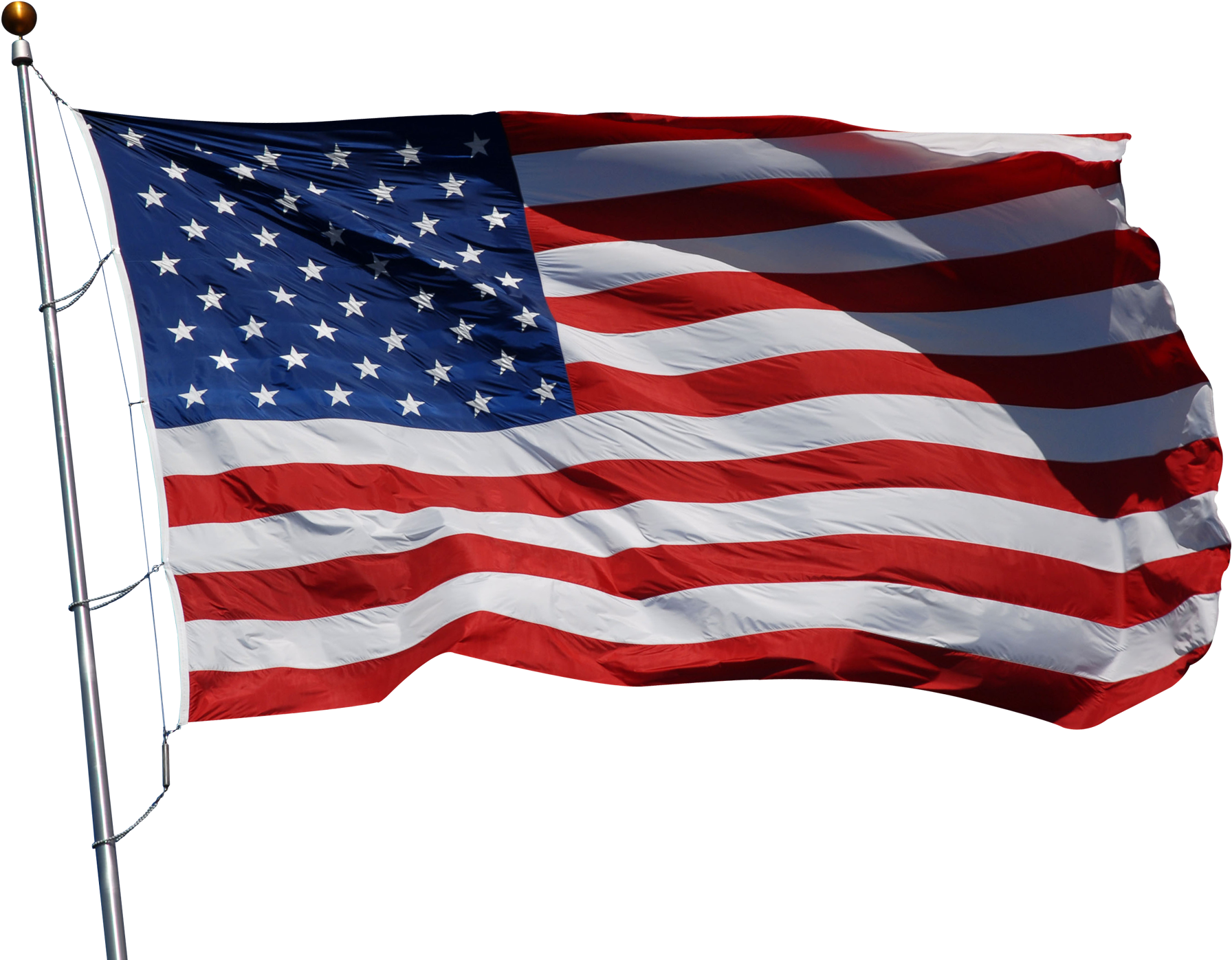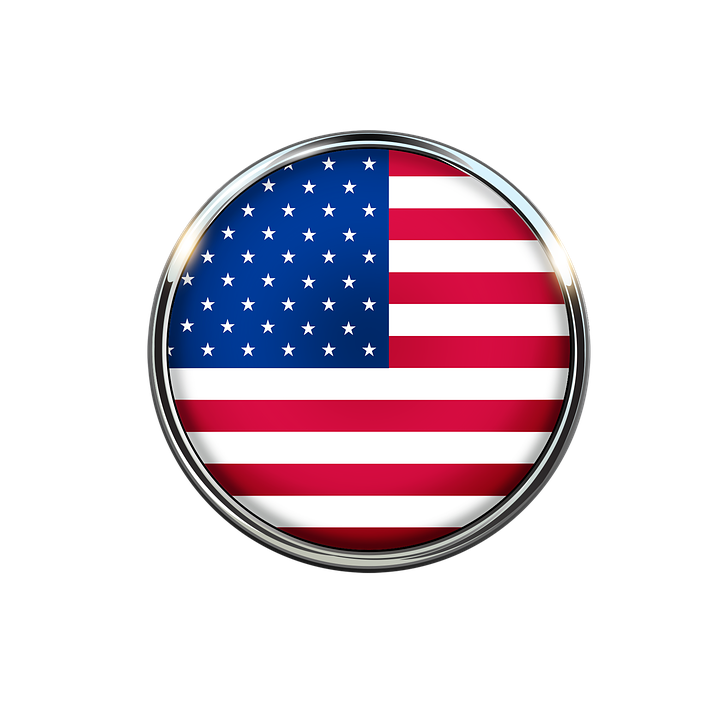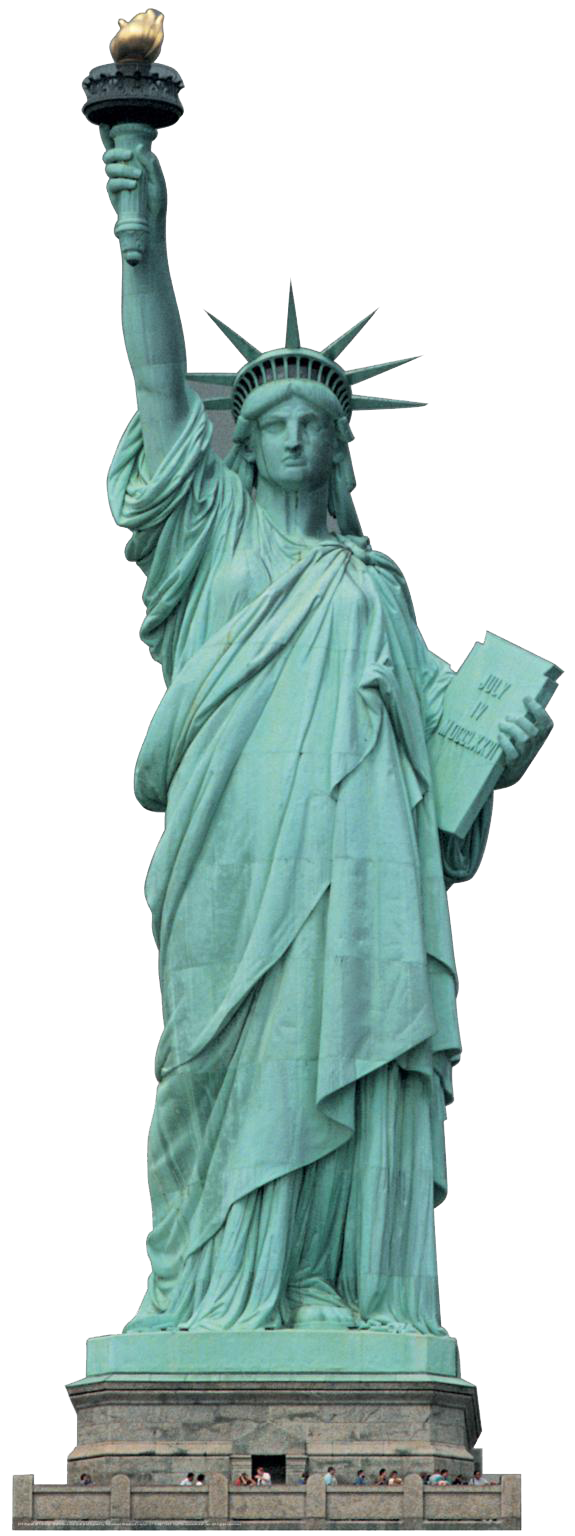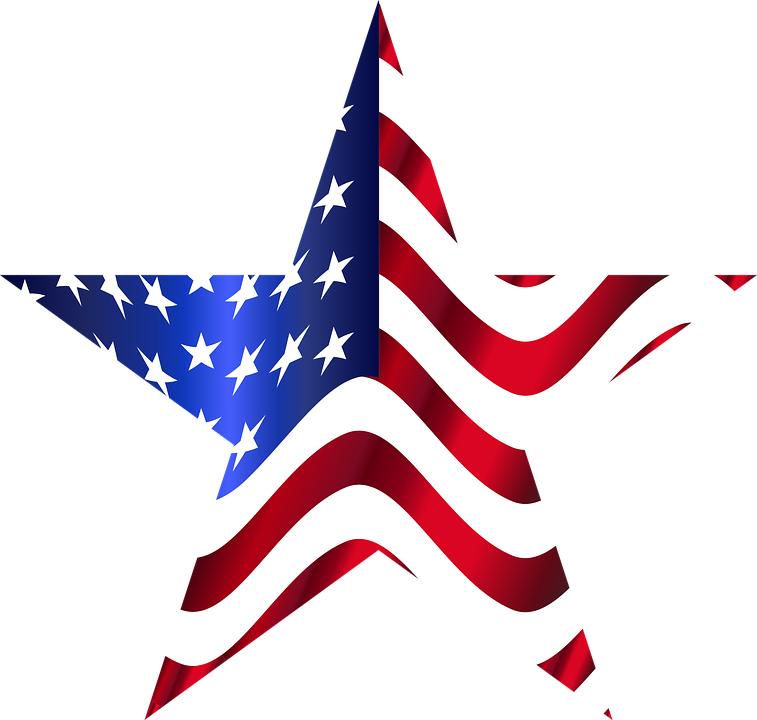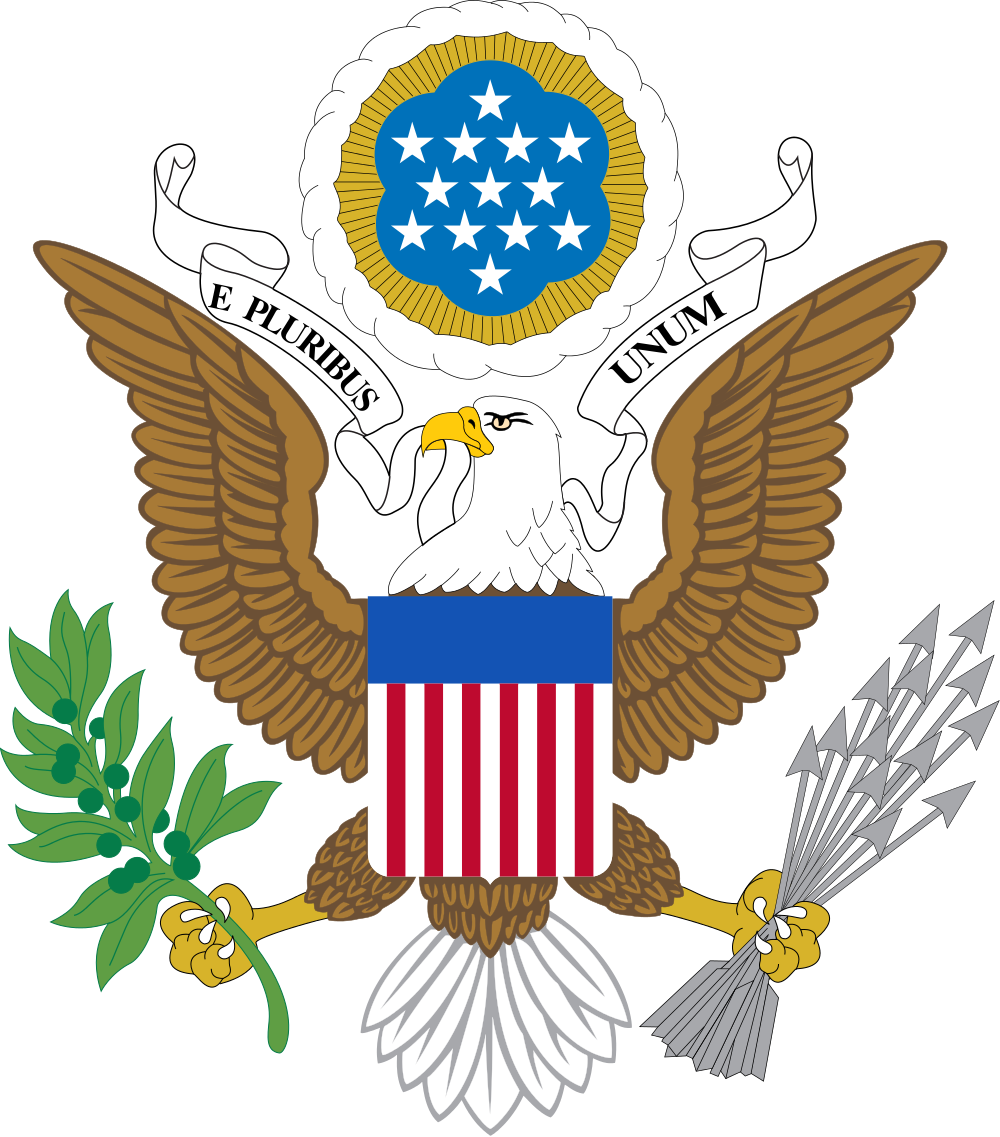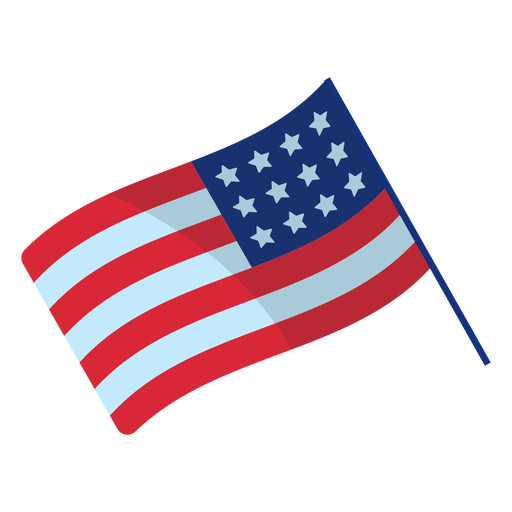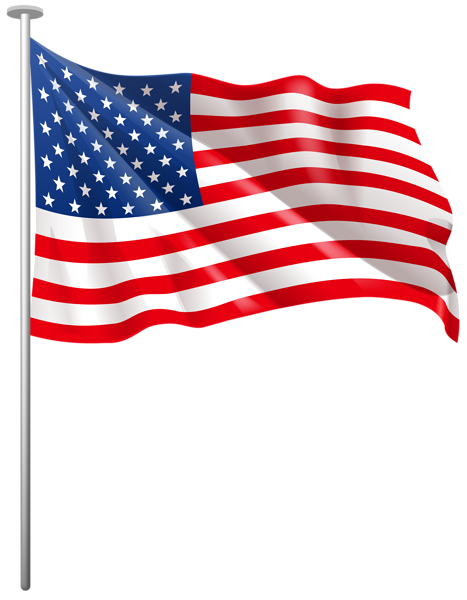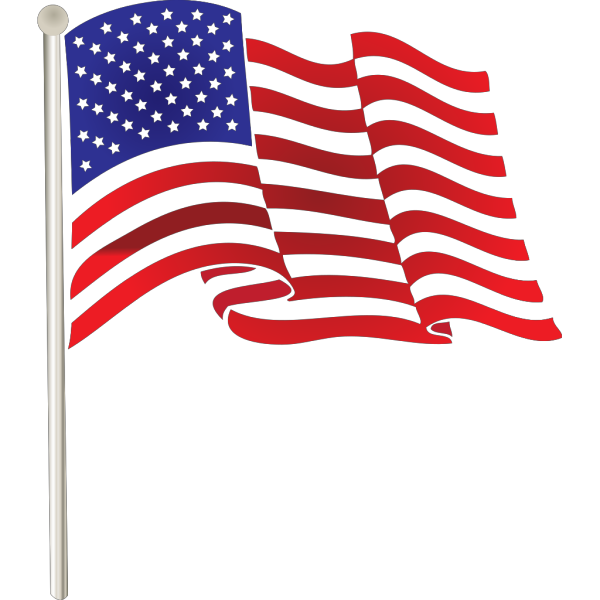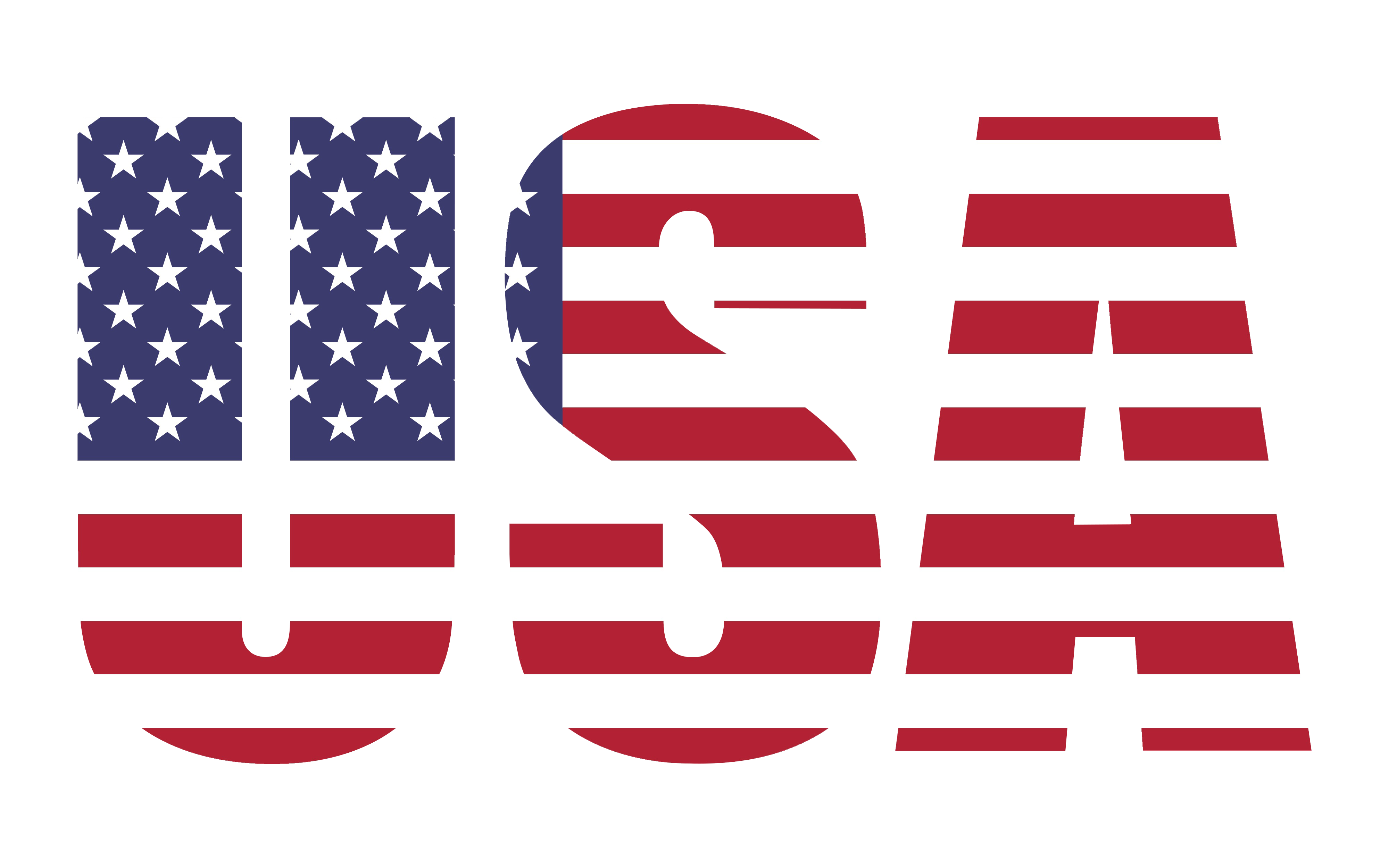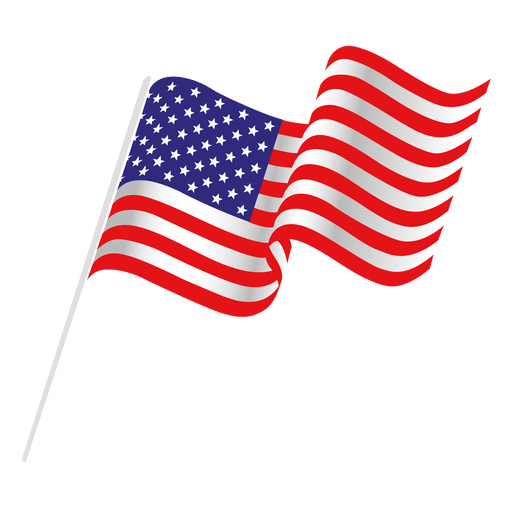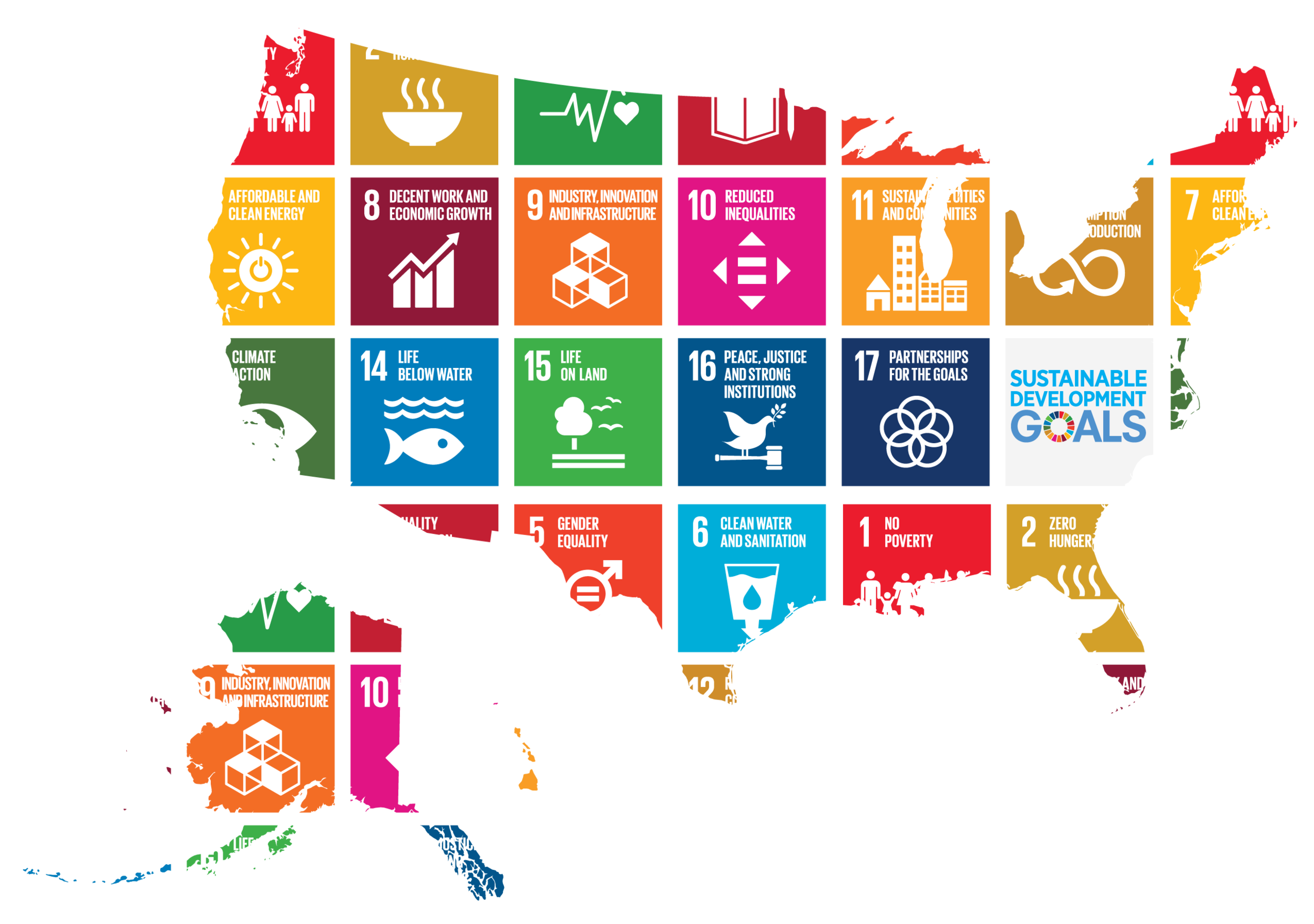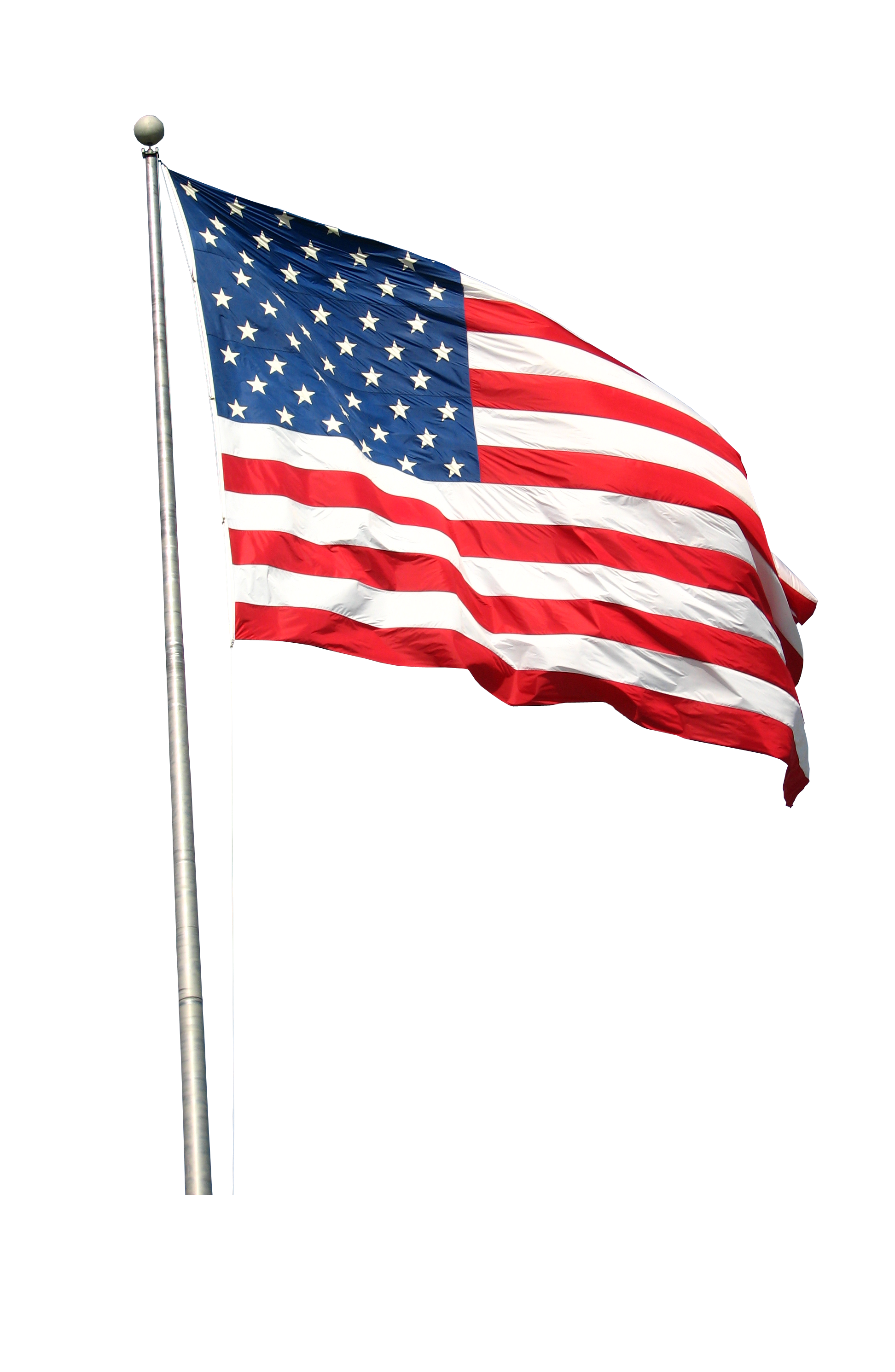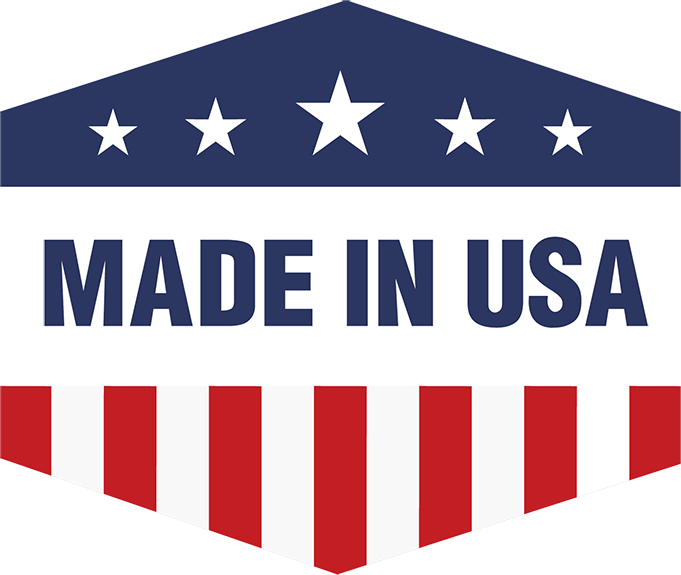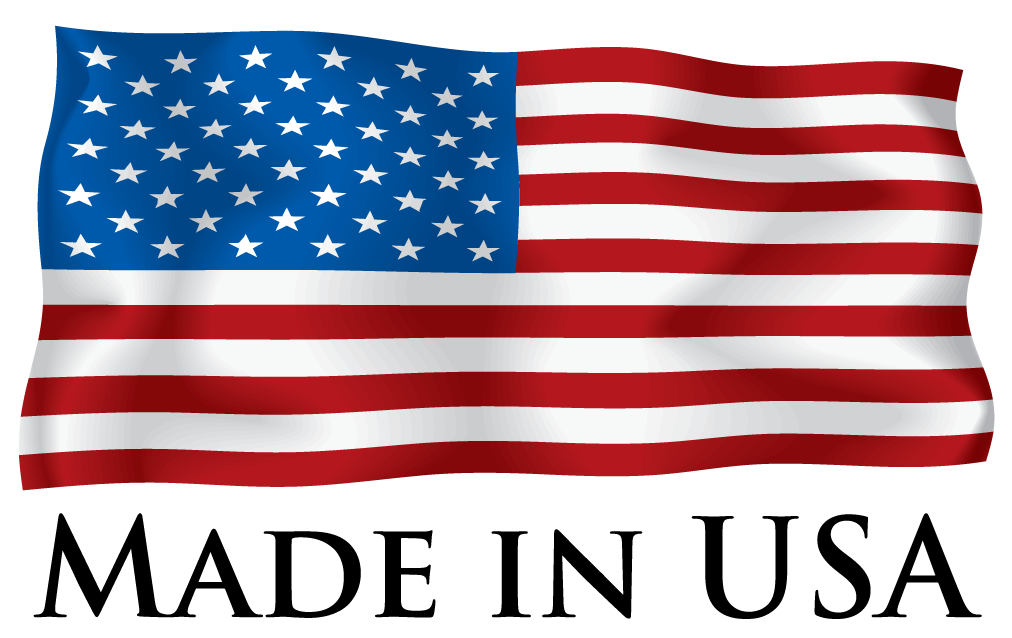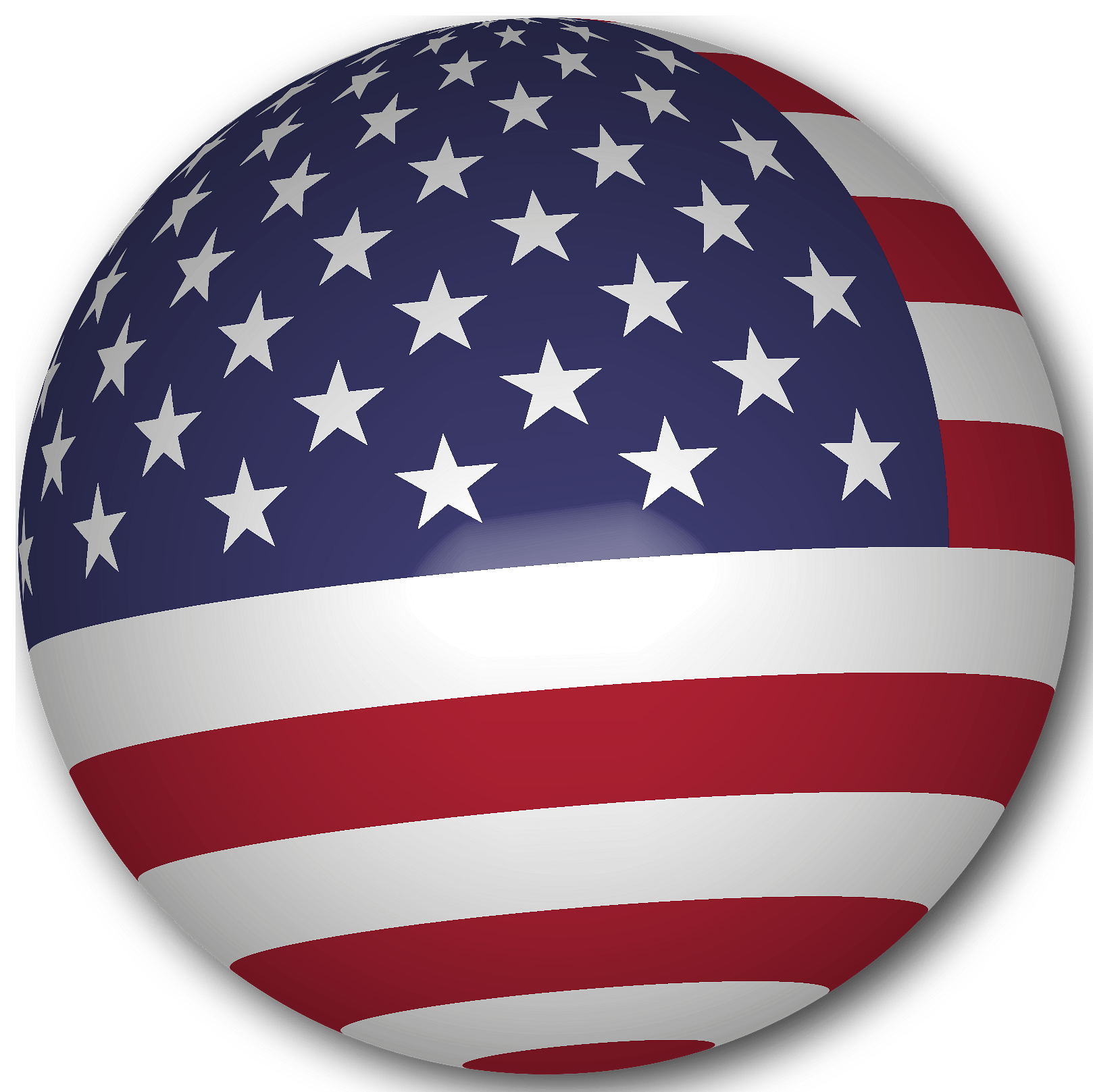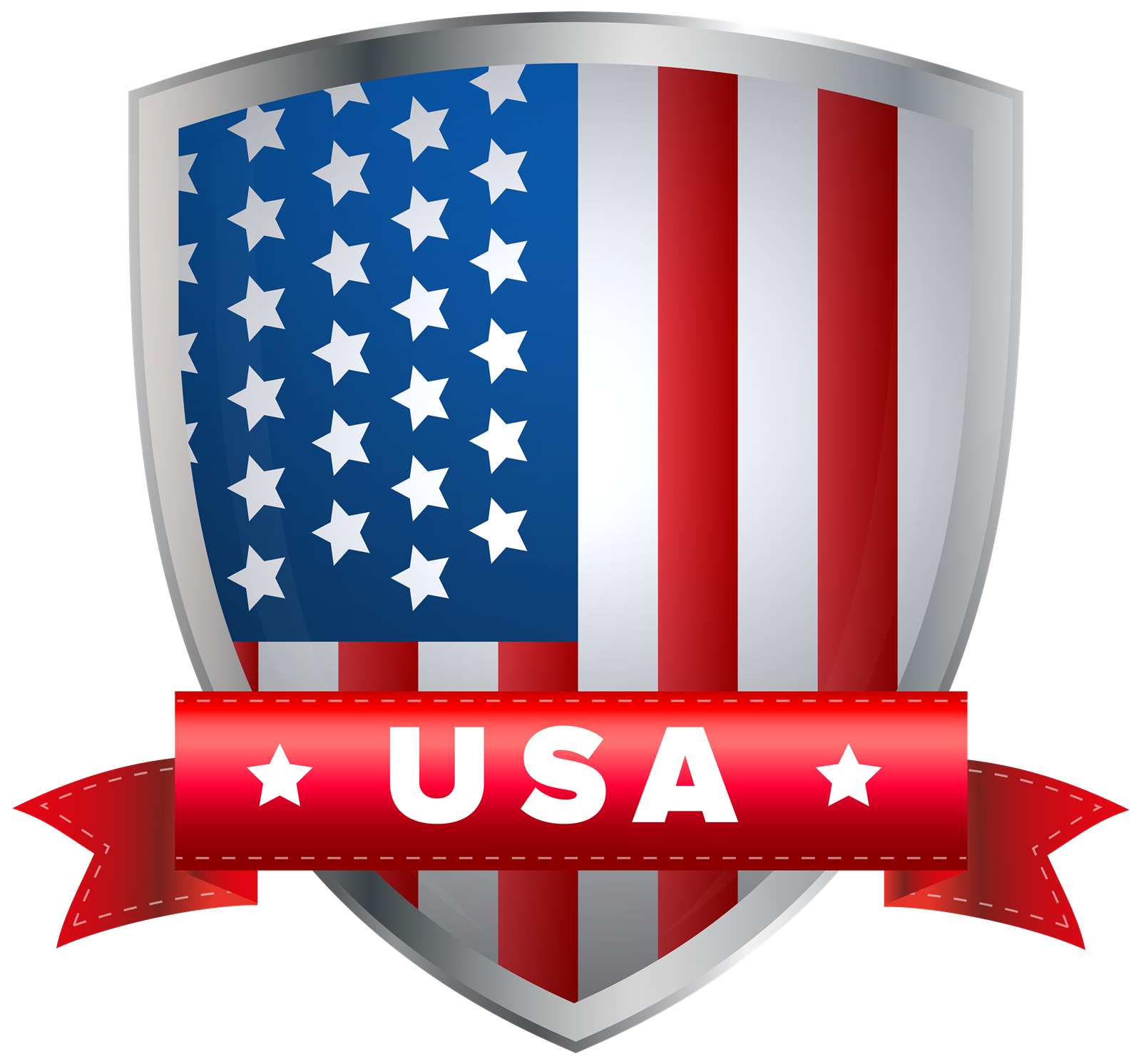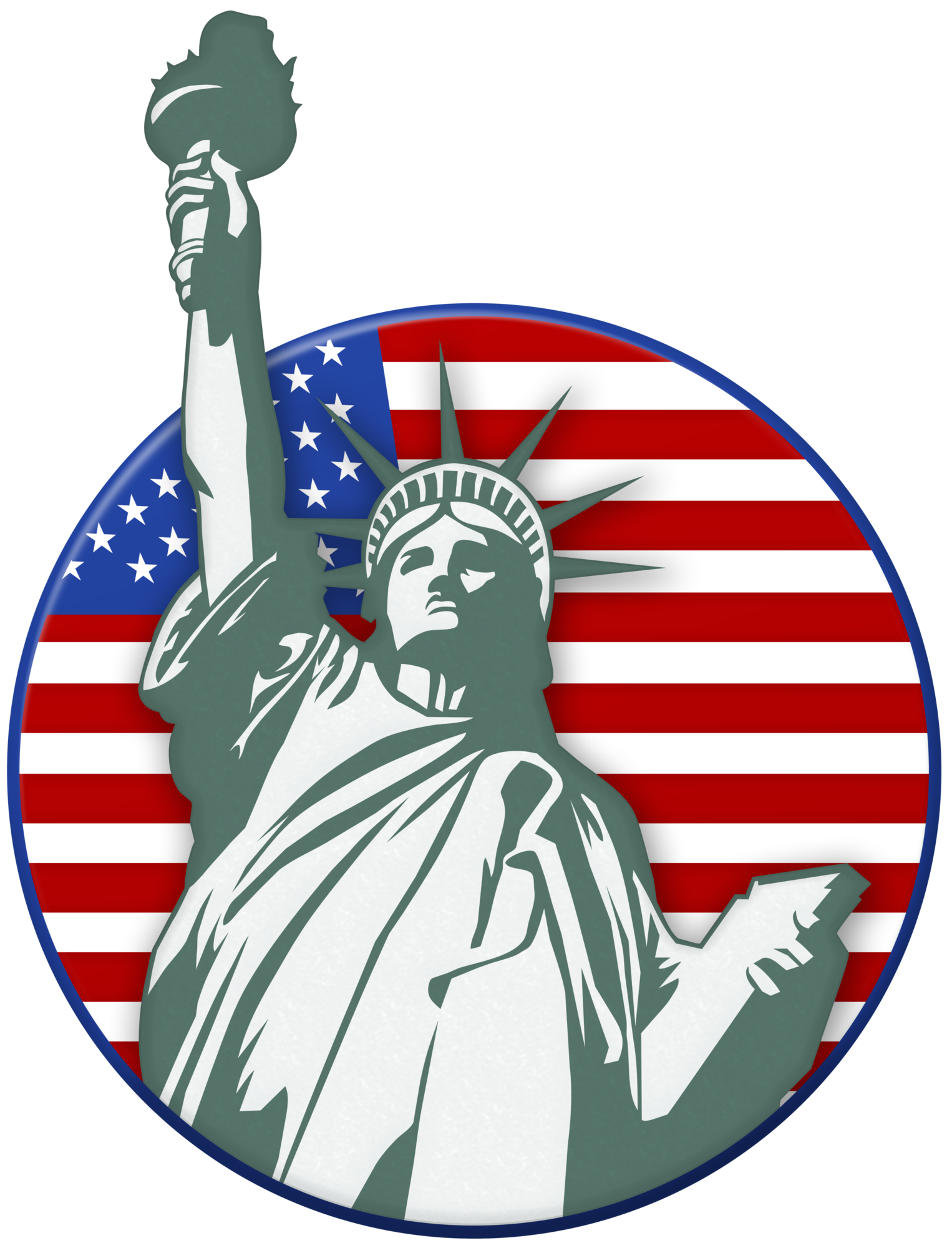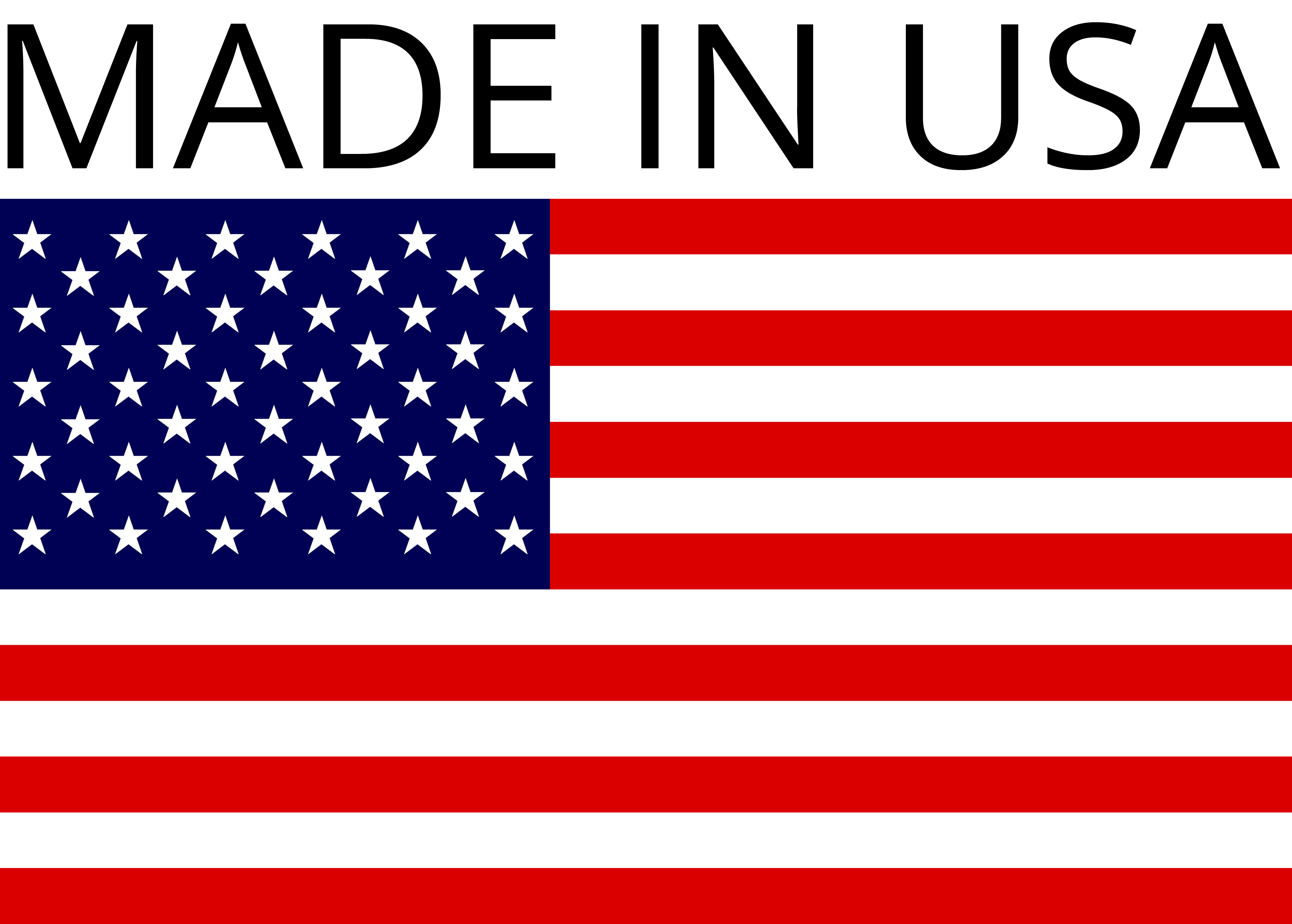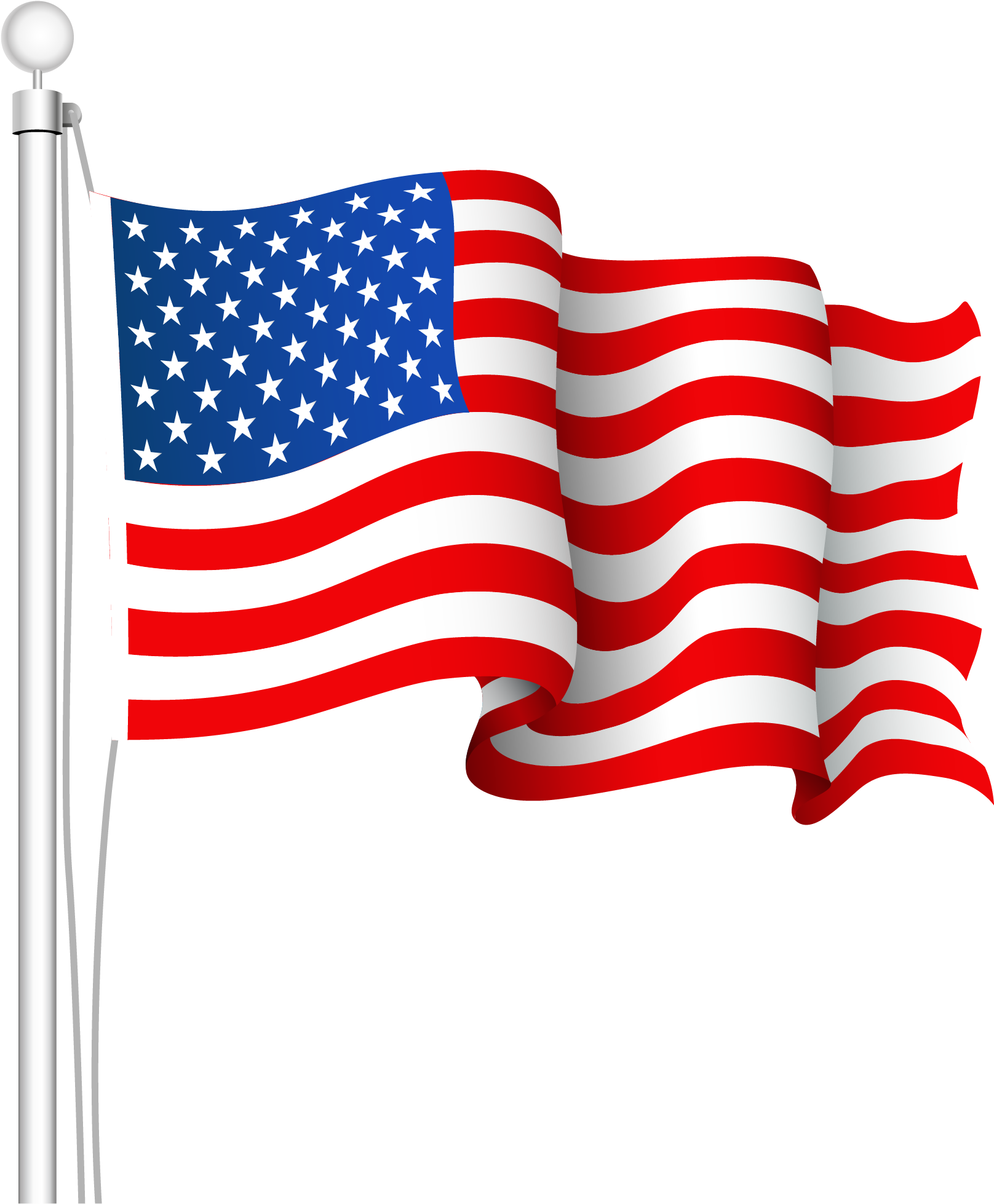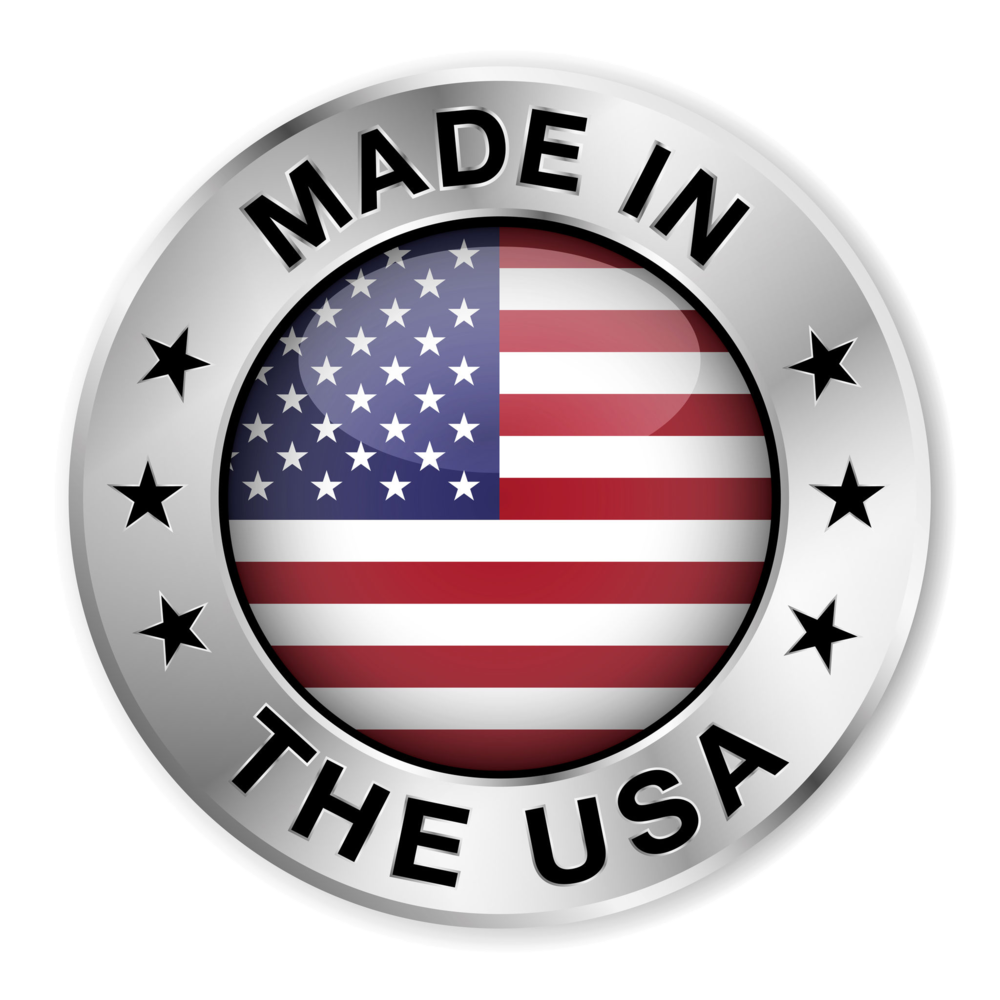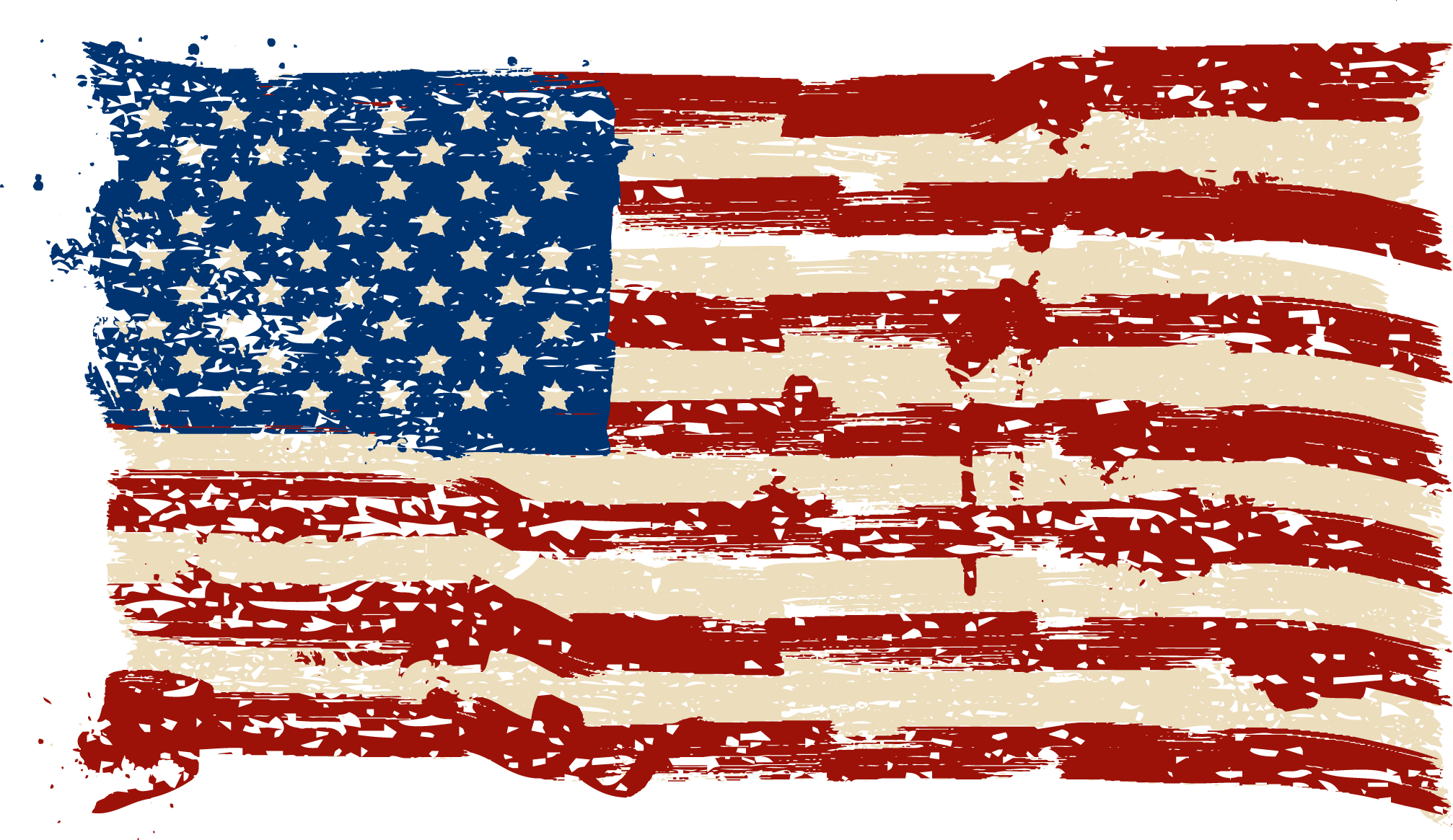Download top and best high-quality free USA PNG Transparent Images backgrounds available in various sizes. To view the full PNG size resolution click on any of the below image thumbnail.
License Info: Creative Commons 4.0 BY-NC
The flag of the United States of America, sometimes known as the American flag or the US flag, is the country’s national flag. It has thirteen equal horizontal red (top and bottom) alternating with white stripes, with a blue rectangle in the canton (referred to as the “union”) bearing fifty small white five-pointed stars arranged in nine offset horizontal rows, where rows of six stars (top and bottom) alternate with rows of five stars.
The flag’s 50 stars represent the 50 states of America, while the 13 stripes reflect the thirteen British colonies that claimed independence from the United Kingdom and formed the country’s initial states. The Stars and Stripes, Old Glory, and the Star-Spangled Banner are all nicknames for the flag.
The Continental Congress would not formally approve flags with “stars, white on a blue field” for another year after the Declaration of Independence was signed in July 1776. The flag known as “the Continental Colors” at the time was traditionally regarded as the first national flag.
During the American War for Independence, the Continental Navy raised the Colors as the ensign of the nascent nation”likely as a means of changing their former British red ensigns by adding white stripes”and used it until 1777, when it became the foundation for succeeding designs.
George Preble used the term “Grand Union” for the Continental Colors for the first time in his 1872 history of the United States flag.
The flag is quite similar to the British East India Company flag of the time, and Sir Charles Fawcett said in 1937 that the design was influenced by the company flag. Both flags might have been readily made by adding white stripes to a British Red Ensign, which was one of the three maritime flags in use at the time. An East India Company flag, on the other hand, might have anything from nine to thirteen stripes and could not be flown outside of the Indian Ocean.
Benjamin Franklin once delivered a speech in support of the United States adopting the company’s flag as their national flag. To George Washington, he stated, “While the field of your flag must be innovative in terms of design aspects, it does not have to be completely new in terms of features. I’m referring to the flag of the East India Company, which is already in use.” This, like the East India Company, was a manner of representing American allegiance to the Crown as well as the United States’ desire to be self-governing.
Some colonies believed the firm might be a formidable partner in the American War of Independence because they shared similar goals and frustrations over British tax systems. As a result, colonists flew the company’s flag to show their support.
The hypothesis that the Grand Union Flag was a direct descendent of the East India Company’s flag, on the other hand, has been questioned for a lack of documented proof. The connection is clear, though, and a number of the United States’ Founding Fathers were aware of the East India Company’s operations and their unfettered management of India under Company authority.
In any event, both the stripes (barry) and the stars (mullets) have traditional heraldic predecessors. Mullets were relatively uncommon in early modern heraldry, however those in the coat of arms of Valais of 1618, where seven mullets stood for seven districts, are an example of mullets indicating territorial divisions predating the United States flag.
Download USA PNG images transparent gallery.
- USA Flag No Background
Resolution: 534 × 469
Size: 265 KB
Image Format: .png
Download
- USA Logo
Resolution: 4850 × 1825
Size: 190 KB
Image Format: .png
Download
- USA Flag PNG Pic
Resolution: 1024 × 516
Size: 29 KB
Image Format: .png
Download
- USA Logo PNG
Resolution: 2280 × 782
Size: 151 KB
Image Format: .png
Download
- USA Flag PNG File
Resolution: 2000 × 2000
Size: 181 KB
Image Format: .png
Download
- USA Logo PNG Pic
Resolution: 450 × 250
Size: 100 KB
Image Format: .png
Download
- USA PNG Image
Resolution: 512 × 512
Size: 11 KB
Image Format: .png
Download
- USA PNG Pic
Resolution: 512 × 512
Size: 15 KB
Image Format: .png
Download
- USA PNG Photos
Resolution: 960 × 502
Size: 227 KB
Image Format: .png
Download
- USA Flag PNG Images HD
Resolution: 600 × 360
Size: 27 KB
Image Format: .png
Download
- USA Flag
Resolution: 1200 × 753
Size: 129 KB
Image Format: .png
Download
- USA Flag PNG Photo
Resolution: 600 × 383
Size: 58 KB
Image Format: .png
Download
- USA Flag PNG
Resolution: 1524 × 823
Size: 275 KB
Image Format: .png
Download
- USA PNG File
Resolution: 462 × 283
Size: 12 KB
Image Format: .png
Download
- USA PNG HD Image
Resolution: 512 × 512
Size: 10 KB
Image Format: .png
Download
- USA Flag PNG Cutout
Resolution: 2000 × 1058
Size: 188 KB
Image Format: .png
Download
- USA Flag PNG Clipart
Resolution: 4000 × 3275
Size: 397 KB
Image Format: .png
Download
- USA PNG Image HD
Resolution: 2484 × 1278
Size: 492 KB
Image Format: .png
Download
- USA Flag PNG Image HD
Resolution: 1532 × 802
Size: 823 KB
Image Format: .png
Download
- USA PNG
Resolution: 1792 × 1397
Size: 1875 KB
Image Format: .png
Download
- USA Flag PNG Free Image
Resolution: 720 × 720
Size: 166 KB
Image Format: .png
Download
- USA PNG Photo
Resolution: 575 × 1536
Size: 618 KB
Image Format: .png
Download
- USA PNG Cutout
Resolution: 757 × 720
Size: 141 KB
Image Format: .png
Download
- USA PNG Images
Resolution: 1000 × 1137
Size: 457 KB
Image Format: .png
Download
- USA Flag PNG Image File
Resolution: 512 × 512
Size: 201 KB
Image Format: .png
Download
- USA Flag PNG Photos
Resolution: 467 × 600
Size: 143 KB
Image Format: .png
Download
- USA
Resolution: 4000 × 1699
Size: 944 KB
Image Format: .png
Download
- USA Flag PNG Images
Resolution: 600 × 600
Size: 89 KB
Image Format: .png
Download
- USA Logo PNG File
Resolution: 4000 × 2500
Size: 696 KB
Image Format: .png
Download
- USA Flag PNG Picture
Resolution: 512 × 512
Size: 26 KB
Image Format: .png
Download
- USA PNG Images HD
Resolution: 2500 × 1758
Size: 463 KB
Image Format: .png
Download
- USA Flag PNG HD Image
Resolution: 1944 × 2980
Size: 2517 KB
Image Format: .png
Download
- Made In USA PNG Image
Resolution: 600 × 262
Size: 42 KB
Image Format: .png
Download
- Made In USA PNG
Resolution: 681 × 575
Size: 66 KB
Image Format: .png
Download
- Made In USA PNG File
Resolution: 1012 × 638
Size: 166 KB
Image Format: .png
Download
- USA Transparent
Resolution: 1618 × 1617
Size: 304 KB
Image Format: .png
Download
- USA No Background
Resolution: 512 × 512
Size: 12 KB
Image Format: .png
Download
- USA PNG Clipart
Resolution: 512 × 512
Size: 11 KB
Image Format: .png
Download
- USA PNG Picture
Resolution: 1600 × 1492
Size: 1262 KB
Image Format: .png
Download
- USA PNG Free Image
Resolution: 1526 × 2000
Size: 1191 KB
Image Format: .png
Download
- Made In USA PNG Pic
Resolution: 3600 × 2575
Size: 245 KB
Image Format: .png
Download
- USA Flag Transparent
Resolution: 1616 × 1958
Size: 315 KB
Image Format: .png
Download
- Made In USA
Resolution: 1000 × 1000
Size: 406 KB
Image Format: .png
Download
- USA Flag PNG Image
Resolution: 2014 × 1165
Size: 414 KB
Image Format: .png
Download
